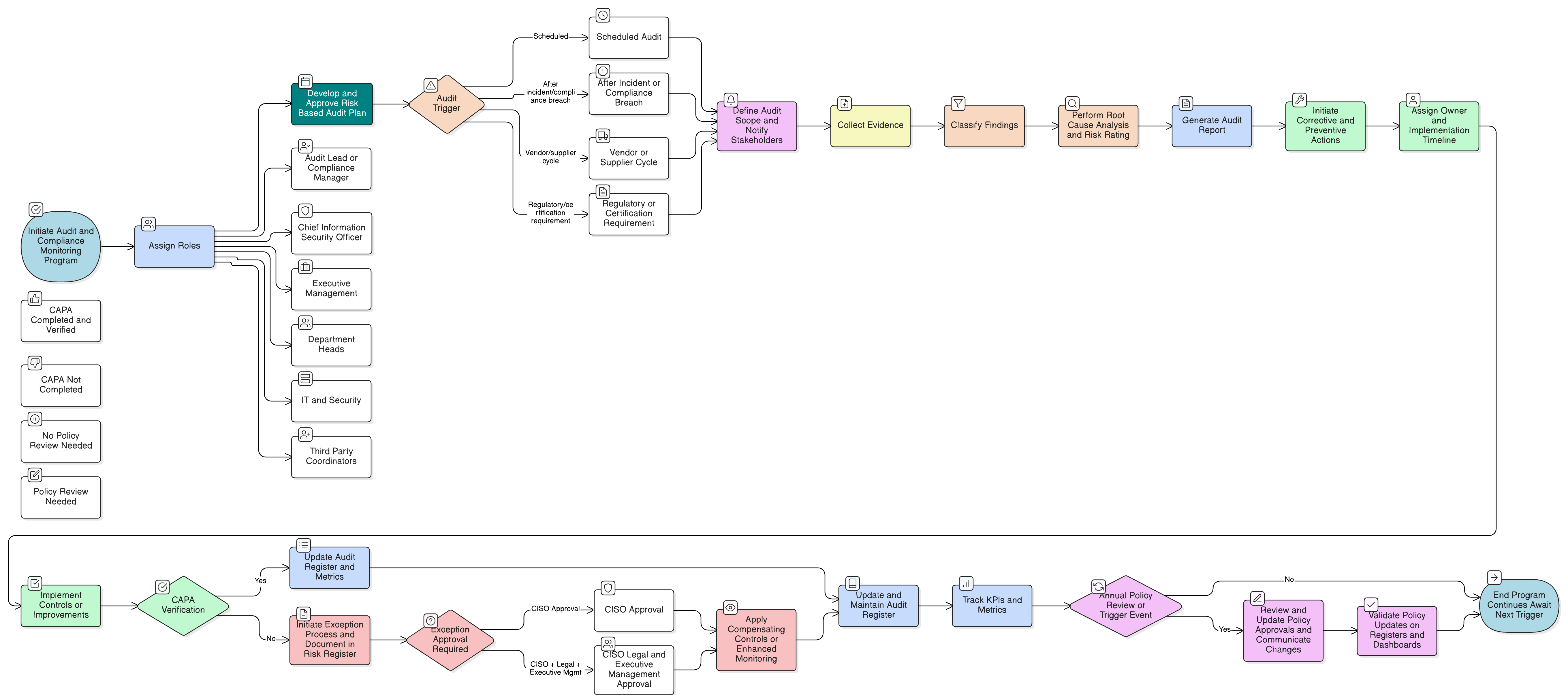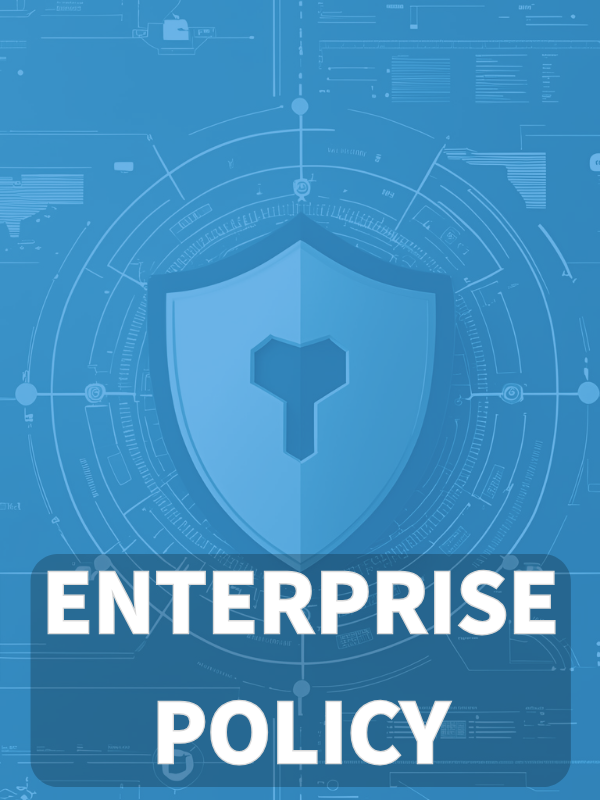Overview
This policy establishes a comprehensive, risk-based audit and compliance monitoring program, ensuring the effectiveness of security controls and alignment with global regulatory frameworks across all relevant systems, assets, and third-party relationships.
Robust Audit Structure
Implements a risk-driven, systematic program ensuring the integrity and maturity of your Information Security Management System.
Regulatory Alignment
Aligns audit practices with global standards like ISO 27001, GDPR, NIS2, DORA, and SOC 2.
Clear Role Assignment
Defines comprehensive responsibilities for audit leads, CISO, management, IT teams, and third-party coordinators.
Evidence-Based Monitoring
Ensures evidence collection, reporting, and retention processes support certifications and regulatory reviews.
Read Full Overview
Policy Diagram

Click diagram to view full size
What's Inside
Scope and Rules of Engagement
Governance Requirements
Internal and External Audit Methodology
Corrective and Preventive Actions (CAPA)
Technical Compliance Monitoring
Third-Party and Supplier Audits
Framework Compliance
🛡️ Supported Standards & Frameworks
This product is aligned with the following compliance frameworks, with detailed clause and control mappings.
| Framework | Covered Clauses / Controls |
|---|---|
| ISO/IEC 27001:2022 | |
| ISO/IEC 27002:2022 | |
| NIST SP 800-53 Rev.5 | |
| EU GDPR |
Article 24Article 32Article 33
|
| EU NIS2 | |
| EU DORA | |
| COBIT 2019 |
Related Policies
Information Security Policy
Defines the ISMS and establishes accountability for compliance and continuous improvement.
Change Management Policy
Ensures audit visibility into infrastructure and configuration changes affecting control environments.
Risk Management Policy
Integrates audit outcomes into enterprise risk evaluation and treatment activities.
Data Retention And Disposal Policy
Governs retention of audit evidence, logs, and compliance records.
Cryptographic Controls Policy
Supports secure storage and transfer of sensitive audit data.
Third Party And Supplier Security Policy
Covers audit rights, assurance documentation, and compliance oversight of vendors.
Incident Response Policy
Aligns audits of incident handling processes with ISMS assurance goals.
Business Continuity And Disaster Recovery Policy
Requires verification of continuity testing and DRP compliance during audit cycles.
About Clarysec Policies - Audit and Compliance Monitoring Policy
Effective security governance requires more than just words; it demands clarity, accountability, and a structure that scales with your organization. Generic templates often fail, creating ambiguity with long paragraphs and undefined roles. This policy is engineered to be the operational backbone of your security program. We assign responsibilities to the specific roles found in a modern enterprise, including the CISO, IT Security, and relevant committees, ensuring clear accountability. Every requirement is a uniquely numbered clause (e.g., 5.1.1, 5.1.2). This atomic structure makes the policy easy to implement, audit against specific controls, and safely customize without affecting document integrity, transforming it from a static document into a dynamic, actionable framework.
Audit Trail Integrity
Mandates encrypted, tamper-evident retention of audit logs and findings, protecting evidence from unauthorized changes.
Exception and Risk Workflow
Includes a structured exception process with CISO and legal reviews, ensuring risks are controlled and documented.
Continuous Improvement Engine
Links audit outcomes directly to corrective actions, KPIs, and risk management for ongoing security program evolution.
Frequently Asked Questions
Built for Leaders, By Leaders
This policy was authored by a security leader with 25+ years of experience deploying and auditing ISMS frameworks for global enterprises. It's designed not just to be a document, but a defensible framework that stands up to auditor scrutiny.
